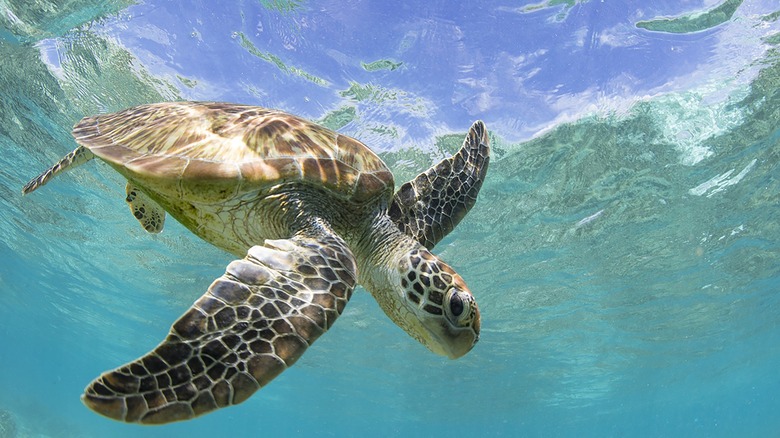One Of The Best Great Barrier Reef Dives Is This Historic Shipwreck
Brimming with more than 1,600 species of fish and 600 varieties of coral, the Great Barrier Reef is considered to be one of the most exhilarating places for diving. It is located off of Australia's eastern coast near Queensland, with many popular diving spots such as Osprey Reef, Ribbon Reefs, or Cod Hole that are sure to provide you with a once-in-a-lifetime experience. Within this underwater wonderland, you can also explore one of the most popular shipwreck dives in the world.
The S.S. Yongala shipwreck, or Townsville's Titanic as many newspapers have named it in Australia, sleeps in the depths of the Great Barrier Reef Marine Park, just off the shores of Alva Beach. It is surrounded by marine life such as the giant trevally fish, a variety of ray species, and loggerhead, green, and hawksbill turtles. The site is a great place to swim among the ocean creatures and explore the history within the mysterious wreckage.
How the S.S. Yongala mysteriously became part of the Great Barrier Reef
After the S.S. Yongala sank during a cyclone off the coast of Townsville in March 1911, killing all 122 passengers, it remained undiscovered for many years. It was not until 1958 that what remained of the ship was discovered. The exact reason as to why the Yongala sank still remains a mystery. To this day, it has become one of the most popular shipwreck sites in the world, attracting more than 10,000 visitors every year.
The Yongala — named after an Aussie town meaning "broad water" in the Ngadjuri language — has now become an artificial reef. It is home to plenty of fish, turtles, unique pelagic species like chevron barracudas and spotted eagle rays, and bull sharks, which are considered some of Australia's most dangerous wildlife. Humpback whales can sometimes also be seen in areas near to the wreck. Because of all the life that the Great Barrier Reef sustains, it is one of the world's most important marine ecosystems and a favorite among divers globally.
Planning your dive at the S.S. Yongala shipwreck
Due to the strong currents and depth, diving into the S.S. Yongala wreck is mostly reserved for experienced divers. Diving tour operators such as Yongala Dive indicate that adventurers seeking to join them in an expedition must have an Open Water certification, deep-dive training, and at least six logged plunges. Those with less than 20 dives can still join but will be accompanied by an expert guide for safety measures.
Clear views of both the wreck and marine ecosystem are best in September, when you'll have visibility up to about 98 feet. From June to August, it will be slightly less clear, and the spring months have a visibility of about 32 to 50 feet. Water temperatures also depend on the season, ranging between 71 to 87 degrees Fahrenheit throughout the year.
It is advised that divers check weather conditions before heading out to sea, as a change in the wind and currents can be unsafe and alter the overall experience. As long as you follow the protocols and instructions issued by your diving operator, beginners can be scuba diving like a professional in one of the world's most popular shipwrecks in no time. If you want another Australian diving spot, Ningaloo Reef is a breathtaking destination for diving and swimming with turtles.


